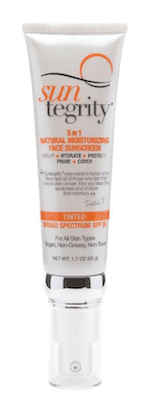



#Best tinted sunscreen for face 2014 skin
Tinted sunscreens can provide anyone an instant, skin-evening glow, while simultaneously helping to protect your skin from both sunlight and artificial light. Tinted sunscreens may help certain skin conditions Otherwise, these ingredients appear to be well tolerated.

While these pigments are considered inactive, there have been two reports of allergic reactions to iron oxides contained in mascara products. The colored base of tinted sunscreens is created by mixing different amounts of black, red, and yellow iron oxides with pigmentary titanium dioxide, resulting in a tinted sunscreen that can be matched to any skin tone. Tinted sunscreens combine broad-spectrum mineral UV filters, like zinc oxide and titanium dioxide, with added pigments - pigmentary titanium dioxides and iron oxides - that create the visible, skin-tone color that can reflect away visible light. Thus, non-tinted sunscreens are formulated to be invisible on skin, and therefore cannot block visible light. The problem? The particles in broad-spectrum, non-tinted sunscreens are “nanosized” (made smaller) to help reduce the white appearance of sunscreen. To block visible light, a sunscreen must be visible on skin. Components of tinted sunscreensīroad-spectrum, non-tinted sunscreens contain filters that block UVA and UVB, but these preparations are not designed to block visible light. This may be especially true for blue light (the kind emitted by device screens), which seems to promote pigment production more than other wavelengths of the visible light spectrum. One study showed that visible light caused more noticeable, persistent hyperpigmentation that UVA alone, especially in people with deep skin tones. For example, visible light has been implicated in exacerbating disorders of excess skin pigmentation, including melasma and post-inflammatory hyperpigmentation (dark spots). Visible light penetrates much deeper into the skin than UV radiation, and can also have negative consequences for your skin. Visible light has several skin-related therapeutic uses at specific wavelengths, including treatment of superficial blood vessels, removing unwanted hair, and treating acne and precancerous skin lesions. Visible light may also come from artificial sources, including medical devices, screens, and light bulbs. It is the portion of the electromagnetic spectrum that can be perceived by the human eye. Visible light is also emitted by the sun. The primary source of UV radiation is sunlight. UVA is primarily responsible for premature skin aging, and UVB has been implicated in sunburns and skin cancer. The harmful effects of UV light on the skin have been well documented. UVC is mostly absorbed by the ozone layer, so UVA and UVB are the primary wavelengths that penetrate the skin’s surface. UV radiation is composed of three different wavelengths: UVA, UVB, and UVC. Ultraviolet (UV) radiation and visible light are both part of the electromagnetic spectrum. Could the days of unsightly sunscreen residue be in your past? What is visible light, and how can it affect your skin? And thanks to their ability to block visible light, they may help certain skin conditions. These mineral-based sunscreen formulations have an added color base that can help even out skin tone while protecting your skin.


 0 kommentar(er)
0 kommentar(er)
